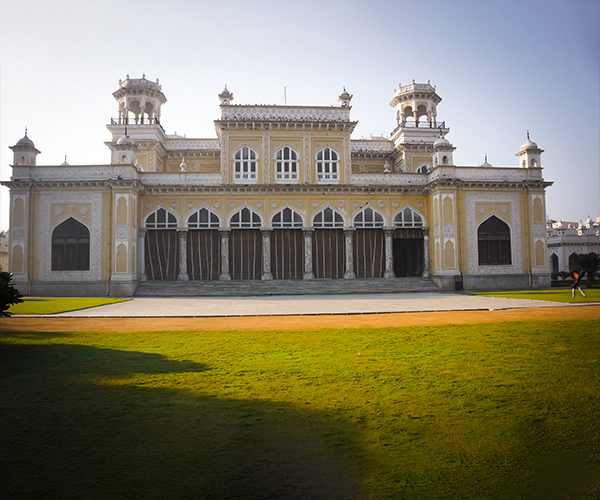
Though I’m tongueless yet my meaning / Is by magic power exprest! / I’m a symbol to the living / Of that Which shall be no more… (II-70)
The heart of the Chowmahalla Palace, the present-day Khilwat Mubarak was commissioned by HEH Mir Osman Ali Khan, the Seventh Nizam, at the end of August 1912, and inaugurated by him in January 1916.
The structure is a result of creative cross-pollination as a graceful blend of Mughal, Qutb Shahi, Iranian and Turkish influences, architectural genius and dedicated labour. While the main double-height darbar hall was created in the Turko-Iranian style, the columns of the verandas are reminiscent of the Qutb Shahi age. In the center of the grand durbar hall sits a marble throne (Takht-i-Nishan), covered in a Mughal-style masnad (seat cover). The hall was used for coronations, grand ceremonies and for holding public court with citizens and public officials.
Today, Khilwat Mubarak houses an extensive exhibition titled ‘Silsila-a-Asafia’ (The Legacy of the House of Asafia), focusing on the lives of the Nizams of the Asaf Jahi dynasty and their incredible contributions to the State. Mahallat, an exhibition of rare photographs of the women of the zenanas, awaits the visitor next, chronicling their lives, fashions and mediums of expressions. The Seileh Khana is a breathtaking display of arms from the Palace’s collection. Walls adorned with vide variety of swords and exotic armaments, shields, guns, bows & arrows and a whole range of expertly crafted weapons.
As one makes their way to the upstairs level of Khilwat, they are led into grand exhibitions of paintings, crockery, cutlery and handlooms. The visitor is encouraged to take their time — such rare pieces may never grace their eyes again.